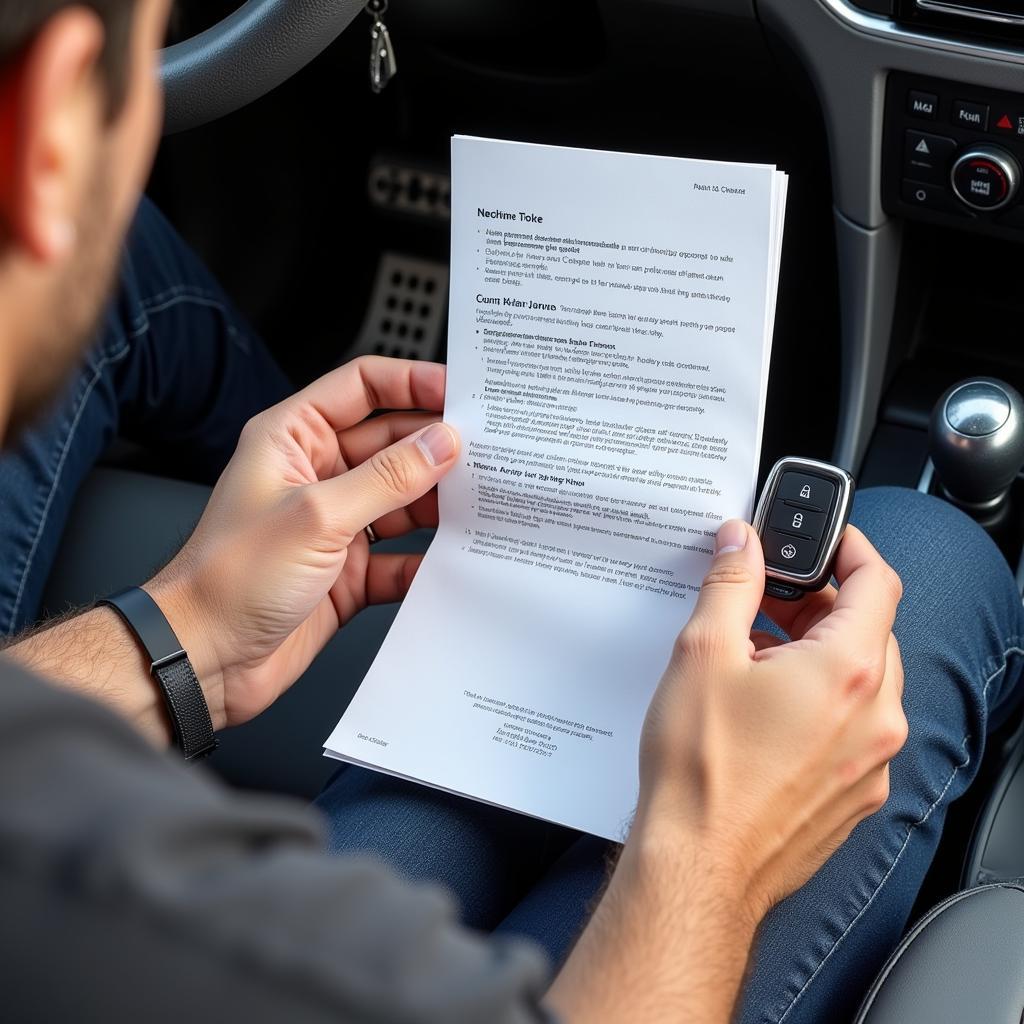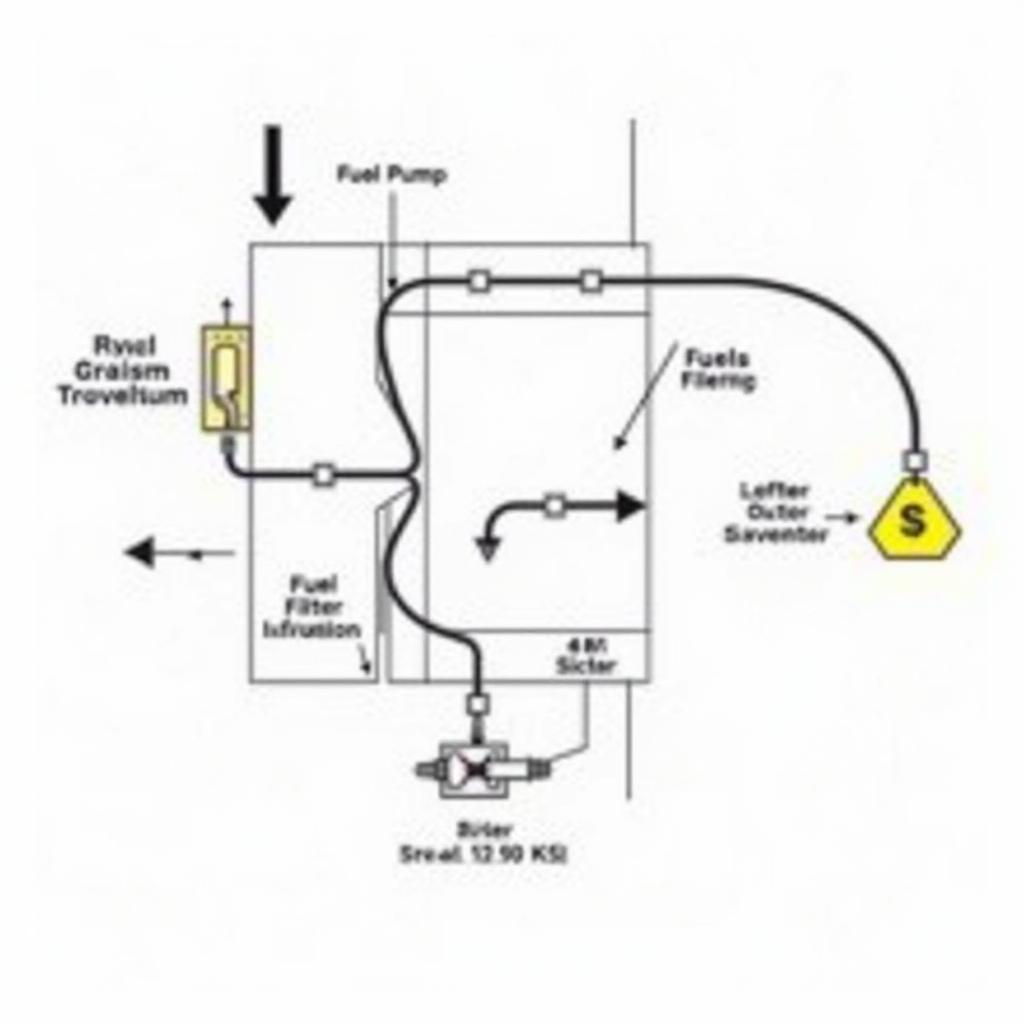The brake pad warning light flashing on your Jaguar dashboard is a clear sign that it’s time to give your braking system some attention. While it can be a bit unnerving, this warning light plays a crucial role in keeping you safe on the road. This article will delve into the common causes of a Jaguar car brake pad warning light, guide you through potential solutions, and equip you with the knowledge to address this issue.
Understanding Your Jaguar’s Brake Pad Warning System
Modern Jaguars are equipped with sophisticated sensors that constantly monitor the thickness of your brake pads. When the pads wear down to a certain level, the sensor triggers the brake pad warning light on your dashboard. This serves as a timely reminder that your brake pads need replacement.
Common Causes of a Jaguar Brake Pad Warning Light
While worn brake pads are the most common culprit, several other factors can trigger the warning light in your Jaguar:
- Worn Brake Pads: Over time, brake pads naturally wear down due to friction generated during braking.
- Faulty Brake Pad Sensor: Like any electrical component, the brake pad sensor itself can malfunction, leading to a false warning light.
- Low Brake Fluid Level: Brake fluid is essential for transmitting force from your brake pedal to the wheels. A leak in the braking system can result in low fluid levels, triggering the warning light.
- Issues with the ABS (Anti-lock Braking System): Your Jaguar’s ABS system plays a crucial role in preventing wheel lockup during hard braking. If there’s a problem with the ABS, it can sometimes trigger the brake pad warning light.
Diagnosing the Problem
Determining the root cause of the brake pad warning light requires a bit of investigation. Here are some steps to help you diagnose the issue:
- Check Your Brake Pads: If you’re comfortable with basic car maintenance, you can visually inspect your brake pads. Look for significant wear or if the pad material is close to the metal backing plate.
- Inspect Brake Fluid Level: Locate the brake fluid reservoir under the hood of your Jaguar. Check the fluid level, ensuring it’s within the minimum and maximum marks on the reservoir.
- Consult a Professional: If you’re unsure or uncomfortable with inspecting the brake system yourself, it’s best to consult a qualified mechanic specializing in Jaguars.
Solutions for a Jaguar Brake Pad Warning Light
The solution to your brake pad warning light depends entirely on the underlying cause:
- Worn Brake Pads: The most straightforward solution is to replace the worn brake pads. It’s recommended to have both the front and rear pads replaced simultaneously, even if only one set has triggered the warning light.
- Faulty Sensor: If inspection reveals that your brake pads are still in good condition, the sensor itself might be faulty and needs replacement.
- Low Brake Fluid: Address any leaks in the braking system and then top off the brake fluid to the appropriate level. If the fluid level remains low after a short period, it indicates an active leak that requires immediate attention.
- ABS Issues: Diagnosing and repairing ABS problems often require specialized diagnostic equipment. It’s best to leave this to a qualified mechanic specializing in Jaguar vehicles.
Don’t Ignore the Warning!
Ignoring the brake pad warning light can have serious consequences, compromising your safety and potentially leading to more extensive and costly repairs.
Preventative Maintenance is Key
Regular maintenance is crucial for preventing brake pad warning light issues. Adhere to your Jaguar’s recommended service schedule, including brake inspections. By catching potential problems early, you can save yourself time, money, and ensure optimal braking performance.
For information on other warning lights, you can check out resources like the foot parking brake warning light wiring or explore more about hand brake warning. Specifically, you might find information relevant to your Jaguar XF model, such as details on the jaguar xf park brake warning light.
Conclusion
A glowing brake pad warning light in your Jaguar should never be ignored. By understanding its causes and taking prompt action, you can ensure your safety on the road and keep your Jaguar performing at its best. Remember, regular maintenance and timely repairs are always preferable to dealing with the consequences of neglect.


